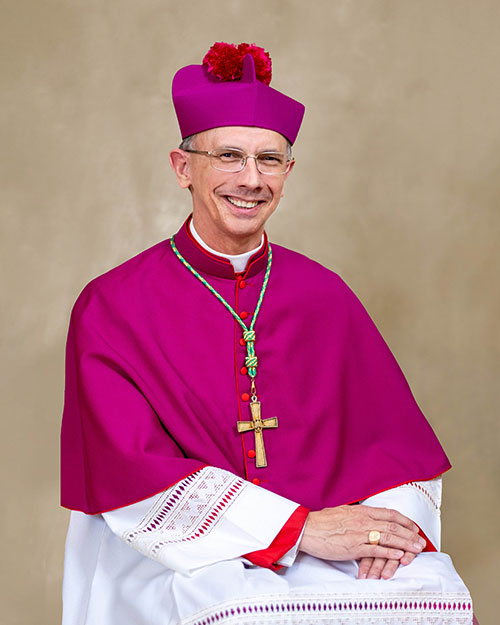 CHARLOTTE — Bishop Peter Jugis was presented with his new episcopal portrait March 2, on the occasion of his birthday March 3 and, later this year, his 20th anniversary of his ordination as the fourth Bishop of Charlotte.
CHARLOTTE — Bishop Peter Jugis was presented with his new episcopal portrait March 2, on the occasion of his birthday March 3 and, later this year, his 20th anniversary of his ordination as the fourth Bishop of Charlotte.
The new official portrait will replace his original portrait that has been on display at parishes, schools and diocesan ministries since his episcopal ordination in October 2003.
The portrait was taken by Travis Burton, owner of TO2 Photography and member of Our Lady of Consolation Parish in Charlotte.

